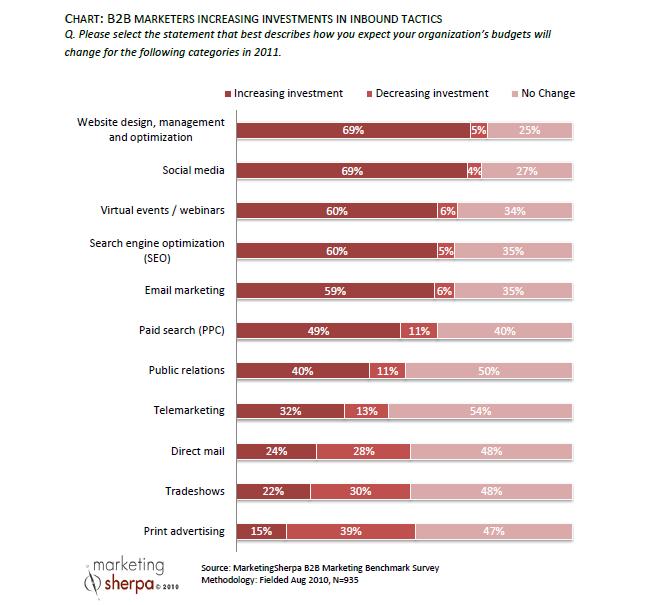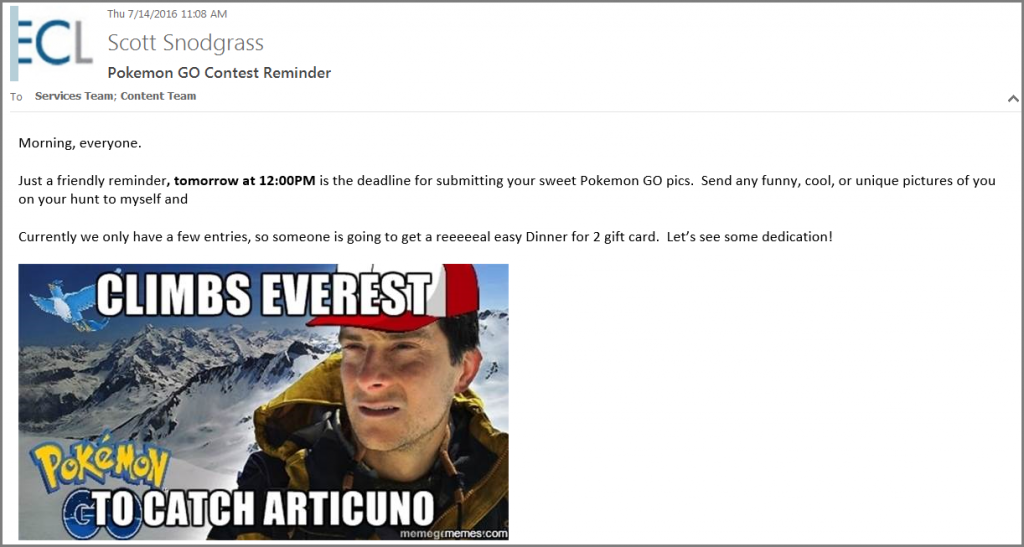Inbound marketing is growing in B2B companies. Investments in webinars, SEO, social marketing and page optimization are all on the rise, as noted in this chart from MarketingSherpa’s new 2011 B2B Marketing Benchmark Report.

As inbound grows, more marketers are finding the right mix of tactics and channels for their companies. There is no one-size-fits-all solution, but certain tactics are commonly reported as effective.
Below, we pulled stats from four charts in the benchmark report to highlight the most-effective tactics for B2B inbound marketing. Check out how the best tactics are interrelated.
Search engine optimization
- Most effective tactic: On-page content optimization
An effective SEO program is vital to an inbound strategy. Most B2B marketers research keywords and create great content about topics surrounding them. One of the most popular content platforms is the blog. Although blogging is not easy, many B2B companies have stuck with it (because it works).
Social media marketing
- Most effective tactic: Blogging
Blogging is the most effective B2B social marketing tactic. This ties directly to the popularity of blogs as a platform for publishing search-optimized content, as well as their ability to engage audiences.
Website optimization and design
- Most effective tactic: Using unique landing pages for campaigns
- Second-most effective tactic: Optimizing design and content for conversions
Inbound marketing can pull more visitors to your website — but visitors have to take action when they arrive. They have to download a report, subscribe to your newsletter, request to be contacted, etc. Otherwise the traffic is wasted.
This is why using unique landing pages for each campaign and optimizing them are the most effective tactics for B2B websites. The tactics reach into all facets inbound marketing and ensure your traffic is put to use.
You can find out a lot more about effective landing page optimization and design tactics at the upcoming MarketingSherpa 2011 Optimization Summit in June.
Pay-per-click advertising
- Most effective tactic: Creating highly-targeted ad groups
- Second most-effective tactic: A/B testing landing page content
Landing page testing is nearly tied for first as the most effective PPC tactic for B2B companies. This, again, illustrates that websites have to be designed to convert traffic that is generated by inbound marketing. Otherwise the traffic is wasted.
Related resources
MarketingSherpa 2011 B2B Marketing Benchmark Report
MarketingSherpa 2011 Optimization Summit
Inbound Marketing: How to pull-in customers without pushing ads
Landing Page Optimization: Value-focused revamp leads to 188% lead gen boost, increase in personal interaction
MarketingSherpa: Subscribe to our Inbound Marketing newsletter










